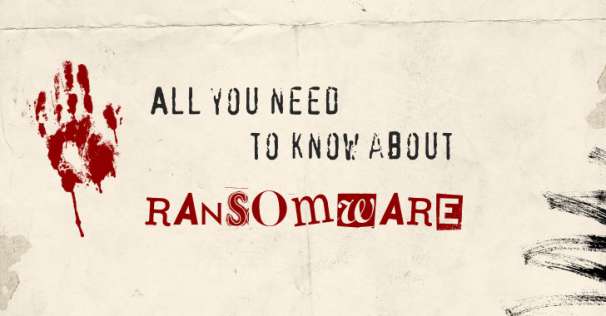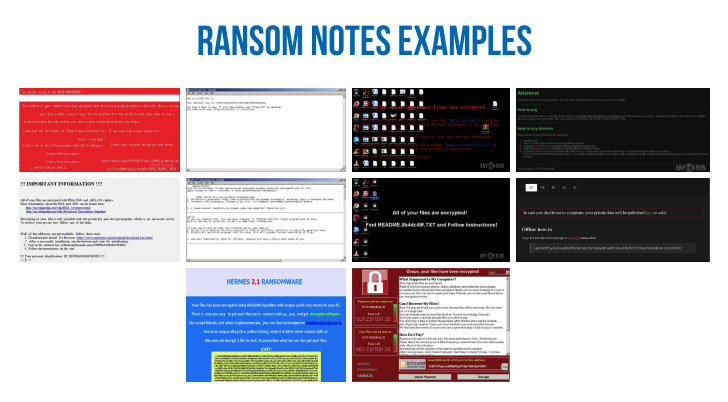Everything You Need to Know About Evolving Threat of Ransomware


The cybersecurity world is constantly evolving to new forms of threats and vulnerabilities. But ransomware proves to be a different animal—most destructive, persistent, notoriously challenging to prevent, and is showing no signs of slowing down.
Falling victim to a ransomware attack can cause significant data loss, data breach, operational downtime, costly recovery, legal consequences, and reputational damage.
In this story, we have covered everything you need to know about ransomware and how it works.
What is ransomware?
Ransomware is a malicious program that gains control over the infected device, encrypts files, and blocks user access to the data or a system until a sum of money, or ransom, is paid.
Crooks' scheme includes a ransom note—with amount and instructions on how to pay a ransom in return for the decryption key—or direct communication with the victim.
While ransomware impacts businesses and institutions of every size and type, attackers often target healthcare, education, IT, government, and finance sectors with deeper pockets—causing damages ranging from hundreds of millions to billions of dollars.
Ransomware attacks started picking up in 2012, and since then, it has become the most pervasive cyber-attacks across the world.
For instance, HelloKitty ransomware hit Polish video game developer CD Projekt Red last week with quite a popular tactic, i.e., attackers threatened the company to leak the source code of games, including Cyberpunk 2077, Witcher 3, Gwent, and along with confidential files in the company.
And it's actually happened! After CD Projekt announced that they would not be paying the ransom, attackers created an auction for the stolen data on a hacker forum.
And it isn't the only example. Ransomware has always been one of the most popular kinds of malicious samples uploaded in malware analysis sandbox ANY.RUN. Over 124,00 interactive sessions with ransomware were analyzed online only in 2020.
From a locker to the enterprise
One of the ways to protect from attacks is awareness. We believe it is a must for enterprise executives and employees to understand this type of threat.
In this article, we'll take a look at the history of ransomware:
The first ransomware
The first known ransomware attack was carried out in 1989 by an AIDS researcher, Joseph Popp, who distributed malicious 20,000 floppy disks to AIDS researchers spanning more than 90 countries, claiming that the disks contained a survey program. Since then, the ransomware threat has evolved a lot and acquired more features.
Locker ransomware
In 2007, Locker ransomware, a new category of ransomware malware, appeared that does not encrypt files; instead, it locks the victim out of their device, preventing them from using it.
Similar to this, WinLock demanded a $10 ransom for the unlocking code. Later, Citadel, Lyposit, and Reveton worm controlled a screen with a fine message from a fake law enforcement agency.
This typically takes the form of locking the computer's or device's user interface and then asking the user to pay a fee to restore access to it.
Scareware
In later years, attackers changed their strategy to capitalize on fear by spreading faking applications and antivirus (AV) programs. The attack involves a pop-up message displayed to victims saying that their computers have been infected with viruses. It lures victims to a website where they're asked for money to pay for software to fix the problem. Everything looked trustworthy: logos, color schemes, and other copyrighted materials.
From that moment, criminals understood that it was much easier to compromise several websites, focus on phishing, and get the whole process automated.
Crypto ransomware
In 2013, CryptoLocker emerged as the first cryptographic malware that typically arrives as an email attachment. The Gameover ZeuS botnet was responsible for these attacks. CryptoLocker encrypts files, and after that, a bitcoin payment was required to unlock them.
If the ransom wasn't received in 3 days, the ransom doubled. CryptorBit, CryptoDefense, CryptoWall, WannaCry enlarged decoy variations and even used system weaknesses to infect computers.
The latest step in that evolution is the arrival of ransomware-as-a-service, which first appeared in 2015 with the Tox toolkit launch. It gave would-be cybercriminals the option to develop custom ransomware tools with advanced evasion capabilities.
Enterprise ransomware
Ransomware attackers leveled up and went to the enterprise stage. They preferred to deal with large organizations and scare them of a possible outbreak.
For example, a target got an email with a threat of distributed denial-of-service (DDoS) attack. To avoid it, victims needed to pay a ransom.
One more case is the data compromise ransom. A criminal threatens a target to exploit compromised information to the public unless a ransom is paid. The following tactic is effective on the enterprise level, as companies don't want to put their reputation at stake.
Now it's clear that malware will continue to evolve. And maybe it will acquire hybrid attacks, including other malware families.
Attack in details
As we now know the history and types of ransomware, now it's time to understand how it works.
- Deployment: In the first step, attackers distribute essential components used to infect, encrypt, or lock the system, downloaded without the user's knowledge, using phishing, or after exploiting targeted system flaws.
- Installation: When the payload is downloaded, the next step is infection. The malware drops a small file that is often capable of defense evasion. The ransomware executes and attempts to gain persistence on the infected system by putting itself to autorun the registry keys, allowing remote attackers to control the system.
- Command-and-Control: The malware then connects to the attackers' command and control (C2) server to receive instructions and, primarily, to deposit the asymmetric private encryption key out of the victim's reach.
- Destruction: Once files get encrypted, the malware deletes original copies on the system, and the only way to restore them is to decrypt encoded files.
- Extortion: Here come ransom notes. The victim gets to know that his data is compromised. The payment range varies according to the type of target. To confuse and scare a victim, attackers may delete several files from the computer. However, if a user pays the ransom, it isn't a guarantee that the information will be restored or ransomware itself will be deleted.

Popular families and operators
Several types of malware are famous in the ransomware world. Let's look through them and talk about popular operators that stand out in malware history:
1) GandCrab ransomware is one of the most notorious ransomware releases in the last few years that amassed nearly $2 billion in payments from its victims.
Believed to be a product of a Russian hacker group, GandCrab was discovered in 2018 as a part of Ransomware-as-a-Service (RaaS) sold to other cybercriminals.
Though GandCrab announced "retirement" in 2019, some researchers claim that it returned with a new strain, called Sodinokibi, with a similar codebase. Sodinokibi targets Microsoft Windows systems and encrypts all files except configuration files.
2) Next, Maze ransomware, which made headlines in the last two years, is known for releasing stolen data to the public if the victim does not pay to decrypt it.
It was the first ransomware attack that combined data encryption with information theft. Moreover, they threatened to make the data public if the ransom was not paid. When the COVID-19 started, Maze announced that they would leave hospitals alone. But later, they broke that promise as well.
In 2020 Maze announced they shut down its operations. But it's more likely that they just moved to another malware.
3) Netwalker used process hollowing and code obfuscation to target corporate victims. But in January 2021, law enforcement agencies teamed up against Netwalker and took over domains in a dark web used by malware actors.
4) Wannacry spreads autonomously from computer to computer using EternalBlue, an exploit supposedly developed by the NSA and then stolen by hackers.
It is the most uploaded type of ransomware in ANY.RUN service in 2020. It hit top malware with 1930 tasks. You can investigate them in the public submission library, search by the "wannacry" tag.
5) Avaddon's malspam usually contains the only smiley to lure users into downloading the attachment. The malware also checks the user's locale before infecting. If it is Russian or Cherokee, Avaddon doesn't encrypt systems.
6) Babuk is a new malware targeting enterprises in 2021. Babuk comprises secure encryption that makes it impossible to restore files for free.
Targets of ransomware attacks
There are several reasons attackers first choose what kind of organizations they want to target with ransomware:
- Easy to evade defense. Universities, small companies that have small security teams are an easy target. File sharing and an extensive database make the penetration simple for attackers.
- Possibility of a quick payment. Some organizations are forced to pay a ransom quickly. Government agencies or medical facilities often need immediate access to their data. Law firms and other organizations with sensitive data usually want to keep a compromise a secret.
And some ransomware spreads automatically, and anyone can become its victim.
The Rapid Growth of Ransomware
The main reason why this type of malware has become successful is the attacks that bring results to cybercriminals. Markets let crooks buy advanced ransomware for making money.
Malware authors provide several ways to pack the ransomware. Malicious software encrypts systems quickly and stealthily. As soon as the ransom is received, it is no challenge to cover the tracks. These points lead to a significant increase.
Now criminals go bald and expect to get hundreds or thousands of dollars as companies don't want to risk data loss and outages.
Ransomware distribution methods
Here are several ways of how ransomware spreads:
- Email (spam)
- Watering Hole attack
- Malvertising
- Exploit kits
- USB and removable media
- Ransomware as a service
- Zero days
Ransomware analysis in ANY.RUN
Let's investigate a sample of ransomware together.
Here is a task with Sodinokibi malware. Thanks to ANY.RUN interactivity, we can follow the user's path:
First of all, we wait for the malicious program to finish file-encrypting on the disc. The distinguishable feature of Sodinokibi is the desktop wallpaper with text.

Then we open a text file on the desktop. Yes, we can interact with files and folders in the virtual Machine during the task execution.
There we can see instructions with the URL address. We can copy it and open it in the browser. On the new page, we need to enter the key; each key is unique for every infected Machine.
There is ours in the text file so that we can enter it. And then a page with the sum of the ransom payment appears and a countdown. Finally, we open the file with an image for test decryption and open it.
Prevention measures
2021 started with arrests of ransomware gangs. The Egregor hacker group has been taken down by French and Ukrainian police last week.
That is a good tendency that law enforcement agencies keep defeating malware actors. However, we need to be cautious and try to stop attacks, too.
To protect against ransomware, companies should have an elaborate plan against malware, including backup data. Since ransomware is very difficult to detect and fight, different protection mechanisms should be used.
ANY.RUN is one of them that helps to identify malware early and prevent infections. Besides that, the most important protection is the training of staff. They need to avoid any suspicious links or files. Employees who know that ransomware exists and how it works can detect such attacks.


